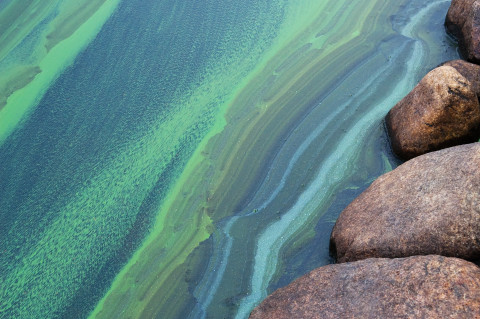- Text Ulla Kaltiala | Photos Raija Törrönen and Mostphotos
The top five health risks to Finns caused by climate change are health effects of heat, water-related epidemics, animal-borne infectious diseases, slipping accidents, and indoor air problems attributable to moisture and mould damage in buildings. “These are considered key risks because they affect so many people, some of them are potentially life-threatening on the individual level, or due to the cost of protective measures to adapt to them being high,” says Professor Timo Lanki.
Lanki was the expert on health effects in the Assessment of weather and climate risks (SIETO) project, which produced a national weather and climate risk assessment for Finland. He is Professor of Environmental Epidemiology and Risk Assessment at the University of Eastern Finland and Chief Researcher at the Finnish Institute for Health and Welfare (THL) in the Environmental Health Unit.
Finns are more sensitive to the health effects of heat
The climate change is causing temperatures to rise in Finland more than they are rising on average elsewhere in the world. “Longer heat waves with higher temperatures pose even greater risks on older people and those with chronic conditions,” says Lanki.
For example, a heat wave caused more than 200 premature deaths in 2003 and more than 300 premature deaths in 2010 in Finland. The mortality of over 75-year-olds increased by 21 percent, and the risk of dying from e.g. cardiovascular diseases, respiratory diseases, and mental and behavioural disorders, increased during the heat waves. New knowledge on the effects of heat, population groups sensitive to heat and ways of adapting to heat will be produced in the Heat and Health in the Changing Climate (HEATCLIM) project coordinated by Professor Lanki and funded by the Academy of Finland.
Finland does not have systematic plans in place for protecting people at risk from the health effects of heat.
Timo Lanki
Professor

According to Professor Lanki, Finland does not have systematic plans in place for protecting people at risk from the health effects of heat. “It should be noted that people in Finland experience adverse effects of heat in lower temperatures compared to, for example, people in South European countries, who are more used to high temperatures.”
“Managing the indoor temperatures of buildings is key in preparing for heat waves, but cooling also causes more greenhouse gas emissions. Passive cooling techniques should also be utilised, while also increasing people’s awareness of the health effects of heat and urging them to take responsibility for their own well-being and the well-being of others when the weather is hot.”
Water-related epidemics, infectious diseases and slipping accidents
Increase in rainfall, heavy precipitation and certain types of floods, as well as the warming winter climate, are affecting the quality of water and increasing the risks of waterborne outbreaks. The exposure of buildings to moisture is becoming a year-round phenomenon, potentially leading to an increase in symptoms caused by moisture and mould damage. “Preparing for the health risks of climate change is not just the responsibility of the health sector, but of the society as a whole, and measures are called for e.g. in water management and the updating of building regulations,” says Lanki.
Blue-green algae poisoning may become more common with the warming of surface waters in lakes and seas. Due to the warming, blooms of dinoflagellates producing neurotoxins which accumulate in fish and filter-feeding shellfish have also been detected more frequently in the Baltic Sea.

Climate change is also enabling the spreading of animal-borne infectious diseases. For example, tropical mosquito-borne diseases dengue fever and chikungunya started occurring in Europe in the 2000s. ”These diseases will not spread to Finland in the near future, but the risk of getting a fever disease must be taken into account when travelling abroad.”
Also a mosquito-borne disease but milder, the Pogosta disease has been occurring in Finland since the 1970s. Extra caution should also be taken with ticks. Able to transmit Lyme disease and tick-borne encephalitis, tick populations are moving further north in latitude and, with the autumn months becoming warmer, ticks stay active longer and that increases the risk of infection to humans. The number of cases of tick-borne diseases has in fact increased. People who live in high-risk areas are entitled to free vaccinations for tick-borne encephalitis, and the area is expanded as needed.
The incidence of epidemic nephropathy (vole fever) and tularemia (rabbit fever) in Finland may change, and canine gastrointestinal helminths causing echinococcosis may spread here. Changes in the plantae include the pollen season being extended by global warming and the spreading of new plants that trigger allergies, such as the common ragweed, to Finland.

Winters can be expected to be increasingly slippery, which in turn increases the number of slipping accidents. “It may not sound like a huge threat, but hospitals treat tens of thousands of patients with injuries caused by slipping each winter, and the economic impact of winter slips is huge, especially on account of the sick leaves of the working population.
Those responsible for the winter maintenance of pedestrian walkways are under a lot of pressure, but citizens are also expected to be mindful of how they can prevent slipping accidents and injuries. Many are already familiar with awareness campaigns on slippery conditions and subscribing to warnings about slippery conditions on their mobile phones – hopefully more people will also be purchasing ice and snow grips for their shoes.
Lanki points out that the worst health effects of climate change, such as water and food shortages and most life-threatening diseases, will not be experienced in Finland. On the other hand, the effects of climate change cannot be completely separated from other factors, such as population growth and resource depletion. “We Finns are also responsible for taking action to combat climate change and keeping our planet habitable.”


